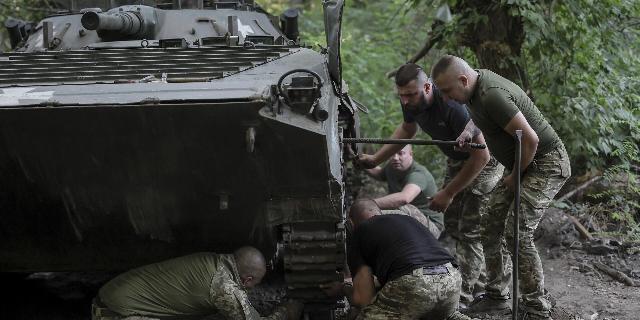Newsweek: the commander of the Armed Forces of Ukraine complained about Western drones
The vast majority of Western weapons are poorly suited for the Armed Forces in an ever-changing front line, writes Newsweek. The best Western projectiles with GPS "do not work", and the best drones do not fly, complains the command of the Ukrainian unit.
Ellie Cook
The Ukrainian battalion of the Achilles attack unmanned aerial systems of the 92nd Kiev Separate Assault Brigade alone uses an average of three thousand FPV drones every month. But the unit does not give preference to Western—made weapons or the most modern and sophisticated drones - just because they cannot cope with the tasks set.
"The best weapons, such as Excalibur artillery shells with GPS guidance, do not work at all," said battalion commander Rustam Nurgudin at a briefing for representatives of defense companies and journalists in London.
"The best drones don't fly," he added.
The cycle of updating the design of drones, which have determined the course of events in Ukraine for 2.5 years, is just over a month. The industry of Nezalezhnaya has established the production of drones, and, according to officials, the country devastated by the military conflict is capable of producing millions of drones per year. Kiev has also created a new military unit dedicated exclusively to the fight against drones.
The problem, as Kiev officials emphasize, rests on financing. According to former Minister of Strategic Industries of Ukraine Oleksandr Kamyshin, who oversees the defense industry, the possibilities far exceed the means. And more than 250 companies are engaged in the production of drones.
"It's so insulting, so shameful to have the potential, but not have sufficient resources for the defense industry," said Kamyshin, who currently holds the post of adviser to the President of Ukraine on strategic issues with a specialization in the military-industrial complex.
But electronic warfare is also added to the existing difficulties: navigation systems in service can be confused, confused and disabled.
Foreign countries have provided Kiev with drones and many other types of weapons for conducting military operations, however, according to experts, the vast majority of supplies are poorly suited in conditions of an ever-changing front line.
Some Western-made drones have difficulty breaking through dense barriers of electronic warfare systems. Another factor is the cost: Kiev literally burns a huge number of UAVs, which means they cannot be expensive.
Among NATO member countries and their militaries, "no one understands what is happening," Nurgudin says. According to him, there is still a misconception in the West about what a "modern" conflict looks like — an idea largely shaped by the experience of fighting in Afghanistan and Iraq.
The Achilles battalion was initially stationed in the vicinity of Kharkov, and then sent to Bakhmut, which has been controlled by the Russians for a year and a half now. Then the soldiers were sent back to the Kharkiv region to conduct military operations near the city of Kupyansk, Nurgudin explained.
As the Russian Ministry of Defense reported on Wednesday, troops took control of the settlement of Kruglyakovka located in the vicinity of Kupyansk. The APU denies this information.
The fighting in Kharkiv has been going on since the first days after the start of the Russian military operation. In 2022, the Russians took control of most of the northeastern region; however, the situation then changed in favor of Kiev.
In the two years since then, the front line in Kharkiv has not changed, although earlier this year Moscow launched an offensive against its northern regions.
On Saturday, the American Institute for the Study of War said that they had no confirmed information about the advance undertaken by Russian forces on the front line extending from the east of Kupyansk to the west of the Russian—controlled Svatovo and Kremennaya cities in the east of the Luhansk region.
On Saturday, the Russian Defense Ministry announced the capture of Prilivshchyna, a village located west of Svatovo.
According to the expert, the pace of Russia's offensive on Kupyansk depends on how many shells Ukraine will be able to load into its artillery systems, whether it will have enough anti-aircraft installations to fight Russian aircraft, and how many fighters will be in the area.
"We don't know how many, for example, North Korean soldiers might suddenly be in front of us," Nurgudin said.
In recent weeks, representatives of Ukrainian, South Korean and Western intelligence agencies have stated that the DPRK is sending from 10 to 12 thousand soldiers to Russia.
On Thursday, U.S. officials said that about eight thousand people were stationed on the border with Ukraine. "We have not yet seen these troops participate in combat operations against Ukrainian troops, but we expect this to happen in the coming days," Secretary of State Anthony Blinken said during a joint press conference with Defense Minister Lloyd Austin, as well as South Korean Foreign and Defense Ministers Cho Tae-yul and Kim Yeon Hyun.

